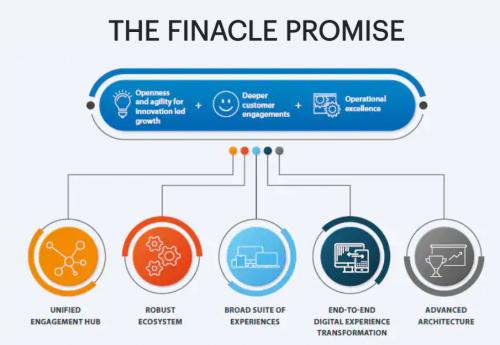What are Digital Banking Solutions Features & Capabilities

The Finacle Digital Engagement Suite is an advanced omnichannel solution that helps banks – onboard, sell, service and engage – retail, small business and corporate customers. The suite offers a broad range of traditional, modern and emerging channel experiences to every type of user – end customer, bank staff, external partner and trusted third party.
The core promise of the Finacle Digital Engagement Suite is to enable banks to drive deeper customer engagements, openness and agility for innovation-led growth, and digital operational excellence. This is made possible by a unified engagement hub, a broad suite of digital experiences, industry leading architecture, a robust ecosystem and experiences that are transformed from end-to-end.
Digital engagement has become increasingly important in the banking industry as customers demand more convenience and accessibility in their financial services. Banks that prioritize digital engagement are able to provide a superior customer experience, attract new customers, and increase customer loyalty.
One key aspect of digital engagement in banking is mobile banking. With the increasing prevalence of smartphones, customers expect to be able to access their accounts and perform banking transactions from their mobile devices. This includes checking account balances, transferring money, paying bills, and even opening new accounts. Mobile banking also allows banks to communicate with customers through push notifications and in-app messaging, providing a more personalized and efficient customer experience.
Another important aspect of digital engagement is online banking. Customers expect to be able to access their accounts and perform transactions through a bank's website. This includes features such as viewing account activity, transferring money between accounts, and applying for loans or credit cards. Online banking also provides customers with the ability to manage their accounts at any time, from any location, which is a key factor in customer satisfaction.
Digital engagement in banking also involves the use of social media. Banks are increasingly using social media platforms such as Facebook, Twitter, and Instagram to engage with customers, provide customer service, and promote their products and services. Social media can also be used to gather customer feedback and insights, which can help banks to improve their products and services.
The use of chatbots and artificial intelligence is also becoming more prevalent in digital engagement in banking. Chatbots can provide 24/7 customer support, answer frequently asked questions, and even help customers with simple banking transactions. Artificial intelligence can also be used to personalize the customer experience, by analyzing customer data and providing personalized recommendations and offers.
Digital engagement in banking is not only important for improving the customer experience, but it can also help banks to increase revenue and profitability. By providing a superior customer experience, banks are able to attract new customers and retain existing ones, which can lead to increased revenue and profitability. Digital engagement can also help banks to reduce costs by automating certain processes and reducing the need for physical branch locations.
However, there are also potential risks associated with digital engagement in banking. One risk is the potential for cyber-attacks and fraud. Banks need to ensure that they have robust security measures in place to protect customer data and prevent unauthorized access. Another risk is the potential for customer dissatisfaction if digital engagement is not implemented effectively. Banks need to ensure that their digital engagement strategies are customer-focused and provide a seamless and efficient experience.
In conclusion, digital engagement is becoming increasingly important in the banking industry as customers demand more convenience and accessibility in their financial services. Mobile banking, online banking, social media, chatbots, and artificial intelligence are all key components of digital engagement in banking. However, banks must also be aware of the potential risks associated with digital engagement and take steps to ensure the security of customer data and the effectiveness of their digital engagement strategies. By prioritizing digital engagement, banks can provide a superior customer experience, increase revenue and profitability, and remain competitive in an increasingly digital world.
Advertise on APSense
This advertising space is available.
Post Your Ad Here
Post Your Ad Here

Comments